(image credit: Nintendo)
More than 30 years after its release, The Legend of Zelda: A Link To The Past remains a vital piece of Nintendo’s history. A Link to the Past is one of the most important games ever. Its influence can be felt in action-adventure games as well as in RPGs and MMORPGs that reinvent the gameplay and strategy concepts of A Link To The Past for the modern era. Let’s take a look at how this single game changed everything. Be warned: spoilers for a 30 year old game to follow.
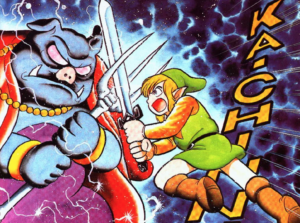
Before A Link To The Past, players had one world to explore. There were different levels and a variety of vibes in a game (a snow level, an underwater lever, etc), but ALTTP introduced the concept of parallel worlds, where events in one world could impact another. About half way through the game Link discovers a pathway to the Dark World, a realm where evil pig/wizard/tragic villain Ganon has transformed the world into a manifestation of his evil wishes. Players can (and should) move back and forth between the Dark World and the Light World while solving puzzles, something that was completely unique at the time.
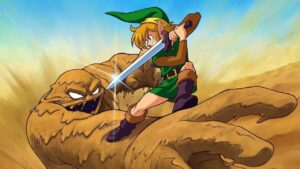
In the late ‘80s and early ‘90s, a game’s playability was only as good as its control system. How many times did you flip out when Mario didn’t jump at the right time even though you pressed the correct button? With A Link to the Past, Nintendo improved their controls, making them more dynamic and allowing for diagonal movement.
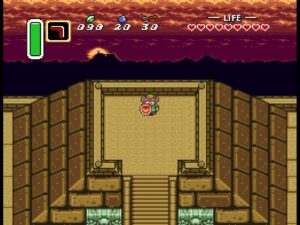
A Link to the Past game encouraged players to explore off the beaten path, and rewarded them for doing so. No longer were players bound to playing a carefully beat out, straight forward game. By creating as open of a world as possible for players, they were allowed to discover things on their own time, be it too early or too late, and even circle back to something that they missed earlier in the game. Anyone who’s played Breath of the Wild or Tears of the Kingdom (or even Skyrim) knows how important this can be.
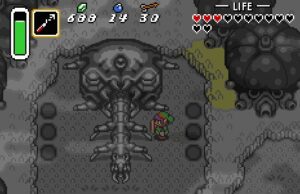
As with most of the games in the Legend of Zelda canon, players control the swordsman, Link, on his journey to save Hyrule. In A Link to the Past this means navigating a large, open world filled with dungeons, forests, villages, and mountains, as well as the parallel Dark World. Players aren’t bound by any strict way to play the game, especially once the Dark World is introduced, which introduces a sense of discovery that’s key to the game’s success. Leaving the beaten path means discovering hidden caves, secrets, treasure chests and kinds of nonsense that’s scattered across Hyrule.

The music of The Legend of Zelda: A Link to the Past is paramount to the success of this series, and the immersive quality of the game as a whole. Composed by Koji Kondo, who also worked on the music for other Zelda titles and Super Mario Bros., the soundtrack blends epic orchestral sounds with 16-bit charm. Kondo’s work gives a sense of grandeur to the series that’s not present in other games of the era. It’s not just that each dungeon and plot moment has its own music, but there’s an emotion to the music that separates this score from anything else that was being released at the time. One of the coolest things about Kondo’s score for A Link to the Past (and the rest of the Zelda franchise) is the way that he infuses Japanese instruments and melodies into the music, making it both otherworldly and grounded in reality.
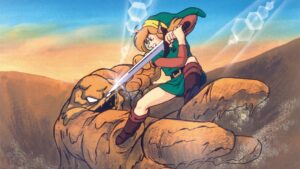
Something that’s super important in the world of video games is testing. There are a million things to figure out during the beta process, from how a new visual system can affect game play to whether or not a story makes sense. Before A Link To The Past’s development, a small team tested how the new 16-bit hardware would affect gameplay. This allowed them to experiment without wasting time.
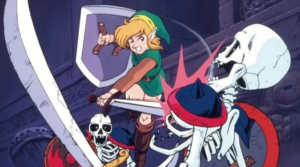
As the third game in the Zelda franchise, A Link to the Past set the standard for what audiences expect out of these games. Future titles like Ocarina of Time, Breath of the Wild, and Twilight Princess owe much of their design to the innovations introduced here. The game’s rich, yet relatively simple, story brought an entirely new level of narrative depth for its time by combining the epic quests that fans loved with emotional moments that ripped your heart out. The hero’s journey on display in this game elevated the medium of video games to a more serious form of storytelling. A Link to the Past pushed video games into the modern era, proving that games can be both artistically rich and technically complex.

